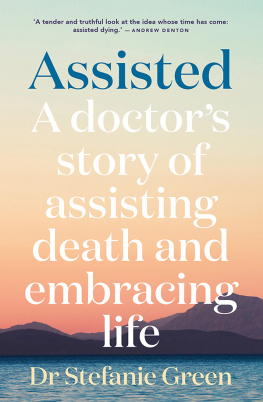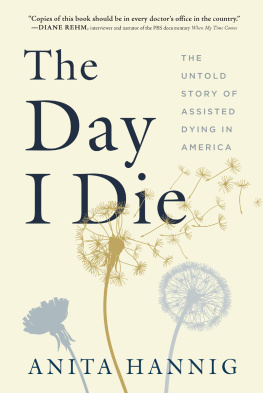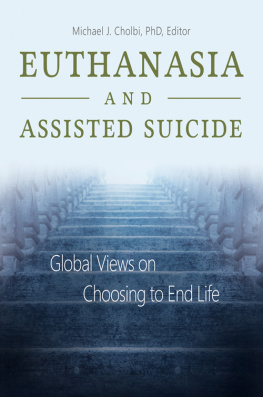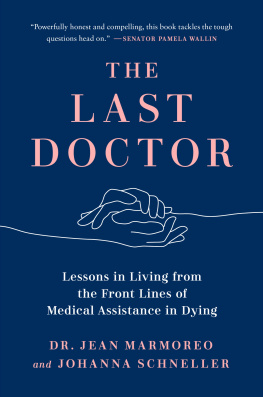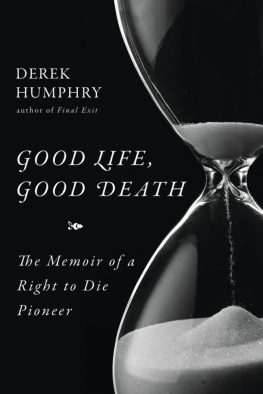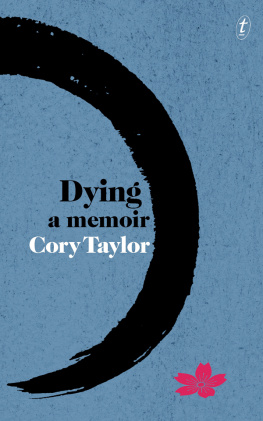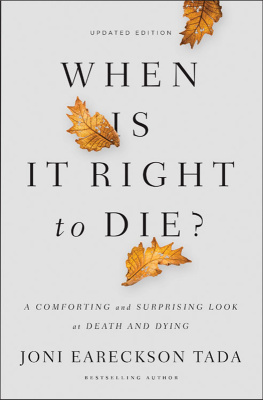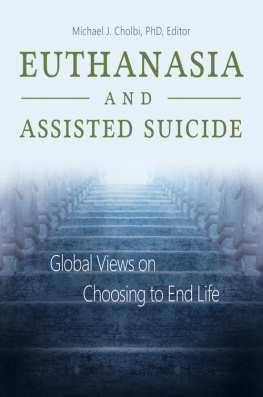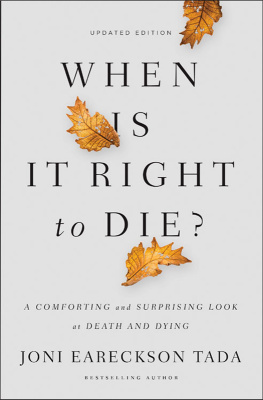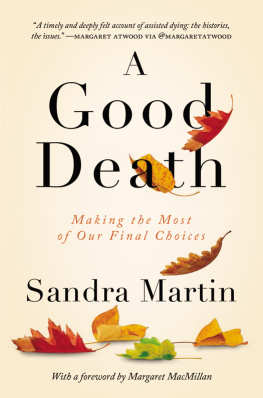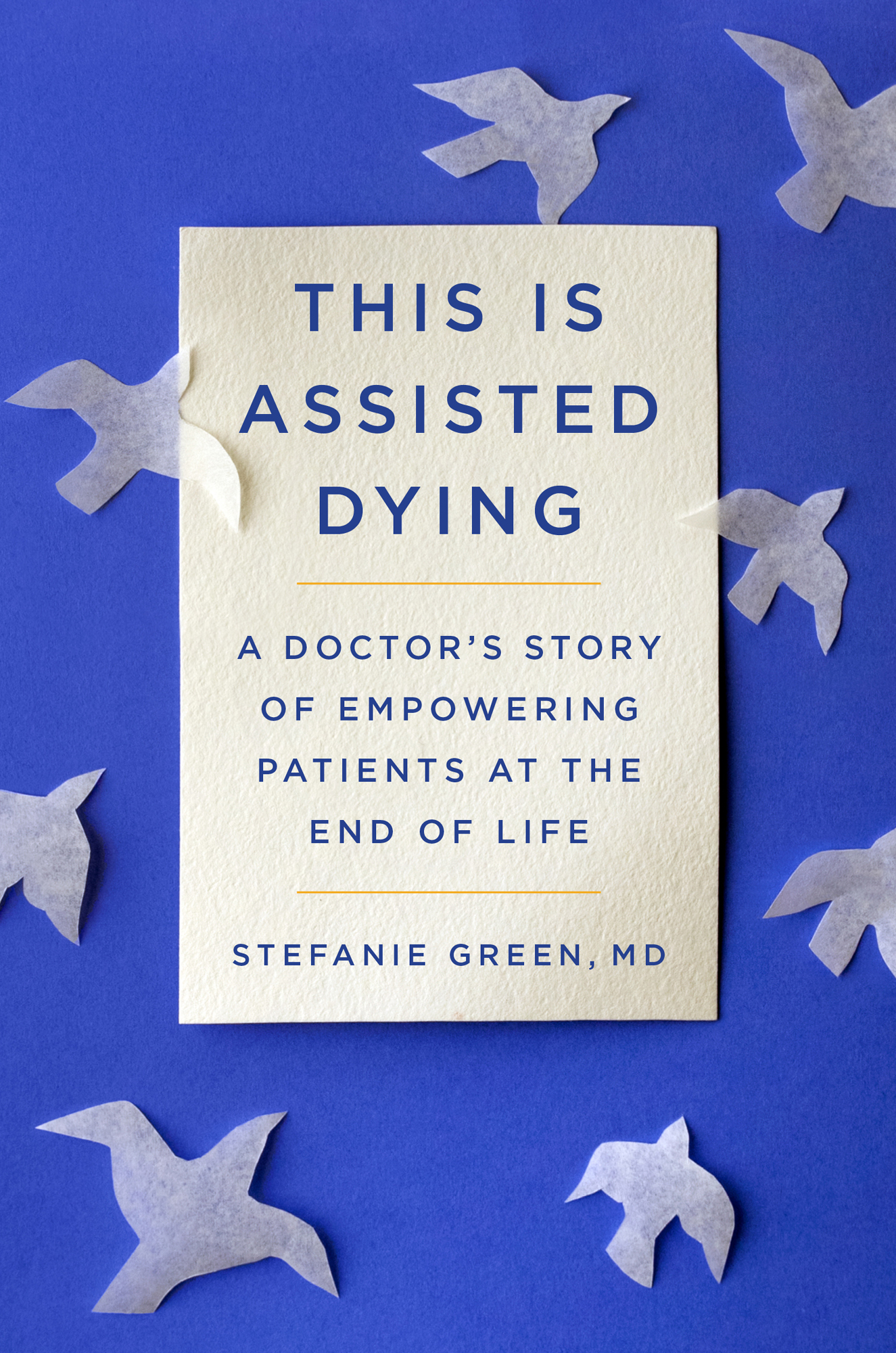Contents
Guide
This Is Assisted Dying
A Doctors Story of Empowering Patients at the End of Life
Stefanie Green, MD

Scribner
An Imprint of Simon & Schuster, Inc.
1230 Avenue of the Americas
New York, NY 10020
www.SimonandSchuster.com
Copyright 2022 by Stefanie Green
All rights reserved, including the right to reproduce this book or portions thereof in any form whatsoever. For information, address Scribner Subsidiary Rights Department, 1230 Avenue of the Americas, New York, NY 10020.
First Scribner hardcover edition March 2022
SCRIBNER and design are registered trademarks of The Gale Group, Inc., used under license by Simon & Schuster, Inc., the publisher of this work.
For information about special discounts for bulk purchases, please contact Simon & Schuster Special Sales at 1-866-506-1949 or .
The Simon & Schuster Speakers Bureau can bring authors to your live event. For more information or to book an event, contact the Simon & Schuster Speakers Bureau at 1-866-248-3049 or visit our website at www.simonspeakers.com.
Interior design by Wendy Blum
Cover design by Natalia Olbinski
Library of Congress Cataloging-in-Publication Data has been applied for.
ISBN 978-1-9821-2946-0
ISBN 978-1-9821-2951-4 (ebook)
For my patients, who have each left an indelible mark
And for all the members of CAMAP, upon whose shoulders I stand
PROLOGUE
WHAT IF YOU COULD DECIDE, at the end of your life, exactly when and where your death would happen? What if, instead of dying alone, in the middle of the night, in a hospital bed, you could be at home at a time of your choosing? You could decide who would be in the room with you, holding your hand or embracing you as you left this Earth. And what if a doctor could help ensure that your death was comfortable, peaceful, and dignified? What if you could plan a final conversation with everyone you love? You might never look at death the same way again.
I knew from the first moment I met him that Ed was an eccentric man. When he opened the door to his apartment, I was struck by the variety of handmade jewelry on his body: a row of bracelets, several necklaces, and multiple earrings. A small statue of the Buddha surrounded by various colored crystals sat on the floor behind him, and a strong smell of incense wafted out of the completely unfurnished space. I had been offering assisted deathsproviding medication and helping people to end their livesfor several months by then, and I had met some fascinating individuals, the courageous pioneers and the truly desperate, but still, Ed stood out.
I got to know Ed and his story over several months while visiting him in various residences, or sometimes in the hospital, in Victoria, British Columbia, Canada. At sixty-eight, Ed was proud to say he had never held a job and had lived the life of a free spirit. He told me he had seen the world, chased his dreams, and had few, if any, regrets.
Like more than 65 percent of the people I work with, Ed had terminal metastatic cancer. His cancer had developed over four years, and never once had he consented to active medical treatment, avoiding chemotherapy, surgery, and radiation. His disease had progressed as expected and now was causing symptoms he couldnt avoid. Eds pain was reasonably controlled, but his increasing need for narcotics, his deep fatigue, and his frequent, urgent trips to the restroom were severely limiting his ability to move around independently, which made it all but impossible for him to venture outside. Life confined within four walls was not a life for Ed. He was articulate in his explanation of the loss of meaning in his everyday experience, the dwindling of sand in his hourglass. He was a true believer in reincarnation, he told me, and was eager to move on to his next life.
Ed was also the first person to tell me he wanted to die alone.
When I arrived on the day of his scheduled death, he was in a small private hospital room, a surprising choice for where he wanted to die, and we chatted for a while first. He seemed ready, eager to proceed, tired of waiting. After a few minutes, he excused himself to go to the washroom and returned wearing a full clown suit: tie-dyed pants and T-shirt, a colorful clown wig, and a red nose. He told me he hadnt been sure if he was going to use the nose or not, but in the end, hed decided to go for it. Despite all our previous conversations, Id never realized Ed was an amateur clown. I asked him why hed chosen to wear the clown suit on this day, and he told me he wanted to go out laughing. He figured this was his best bet.
I called for the nurse, and as Ed was having his IV started, I excused myself to go see his friend Maggie, who he had asked to wait in the quiet sitting area nearby. About ten years his junior, she was sad but coping. I wanted to explain to her what would be happening even though she wasnt going to be in the room with us, but before I got started, I mentioned that Ed had put on his clown suit.
Oh, good, she said, he felt sure that would make him smile. I saw a small, shy grin. You should tell him a joke.
I was open to the idea but at a bit of a loss for content.
He helped me through a tough time a while back, Maggie explained. Weve known each other over twenty years. He taught me the basics of how to be a clown. She smiled broadly at the memory. We even worked a few events together. I was terrible at it, but it wasnt really about the clowningit was about the friendship.
Then she told me his favorite joke.
I headed back into Eds room, where everything was in place. He was resting on top of the bedsheets, quite colorfully laid out. He was ready, he told me, and the nurse confirmed that all was in order from his perspective too.
The nurse, a middle-aged man dressed in hospital greens, was a veteran in his profession, and as he finished packing up his IV supplies, he paused to look me in the eye. These were still early days in assisted dying, and I wasnt sure what might be going on in his mind. Across the bed from him, I replanted my feet, lifted my chin (perhaps only metaphorically), and readied myself for a possible lecture about how he couldnt condone the work I was doing. But the nurse spoke quietly and explained it was the first time hed been involved in a case of assisted dying. He wanted to thank me for my work. He believed having this option was important, that it was long overdue, and he was glad he could contribute in some way. I exhaled. I suspected he may have witnessed many deaths over the years that he might not have described as good, and his brief, unexpected remarks sparked a feeling in me of relief and being supported. I thanked him for his words and work, and he left Ed and me alone.
Are you sure youre ready? I asked Ed.
Yes, I am certainly ready, he replied. He was looking straight up at the ceiling: not nervous, not sad, but not smiling.
All right, then, I will begin.
I was standing next to the bed on Eds left with the medications neatly lined up on the bedside table. Eight syringes in all; the middle two were quite large and filled with a milky-white substance. The bright blue plastic tackle box I carried them in was on the floor next to my foot. I administered the first dose of medication through the IV catheter in his arm. Often around this time, I will guide my patient to a cherished memory, if appropriate. On this occasion, however, I leaned over and spoke close to his ear.


